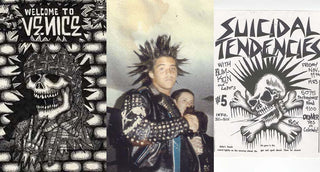In its nascent days, the American Hardcore Punk scene birthed itself as an immediate culture. With a rambunctious sound and independent spirit, the music attracted a generation of kids who were looking to be a part of something that was legitimately edgy and wholly all its own. But as quickly as the scene formed, an overall orthodoxy seeped its way into the proceedings which deemed it trite to many who were first drawn to it. Right around the time things began to go awry with the music, a band from the grotty seaside town of Venice, California, appeared on the scene with a debut album which gave a glimmer of hope that maybe not all was lost so early on in the genre’s life span.
When Suicidal Tendencies released their twelve song album on the Frontier record label in 1983, not only did they come off like an anomaly due to not being afraid to showcase their non-punk influences of Black Sabbath and other heavy music from the previous decade, but by not presenting themselves in the standard Hardcore Punk style of leather jackets, shaved heads, and anarchy symbols. Adorned in their neighborhoods’ traditional gangster dress style of Pendleton button-ups, tank tops, and Dickies, the band made their presence known by adhering to one of the cardinal rules of punk: Be Yourself.
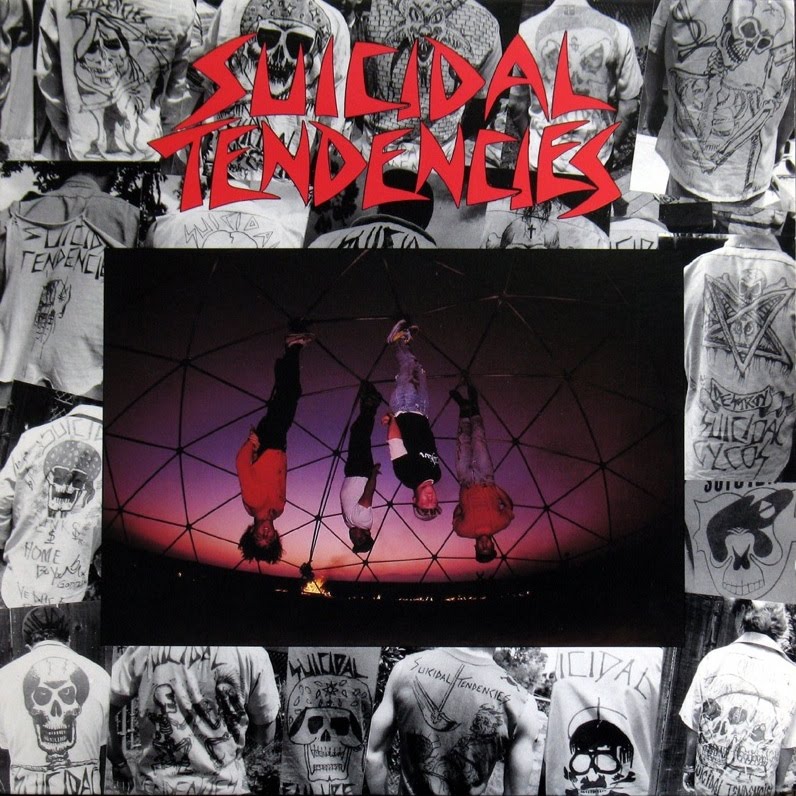
But perhaps the biggest factor in their impact was the cover of that record. Made up from a collection of photographs taken by the bands’ manager and producer Glen E. Friedman, the jacket displayed an army of fans and friends sporting hand-drawn shirts showing support for their ‘hood heroes. The artwork on the shirts was crude in its intent, but sophisticated in its approach. And much like the band themselves, it gave homage to Venice by using the graffiti style many gangs threw up on walls in the area. It was both disturbing and alluring; the very essence of punk rock itself. The majority of the shirts presented were drawn by Ric Clayton, a Venice native, and the man synonymous with the menacing imagery associated with the band that is now in their thirty-seventh year of existence.
When asked what inspired him to draw these images, Clayton responds back plainly, “I’ve always liked drawing skulls. I don’t know why.” For the duration of our phone conversation, this is the way Clayton speaks about himself, his time in the Southern California punk scene and the art he creates: unpretentious and blunt—the true sign of a natural talent. “When I was a kid, I was always getting kicked out of schools for two things: fighting and drawing graffiti on everything. Eventually, the graffiti part worked out for me.”
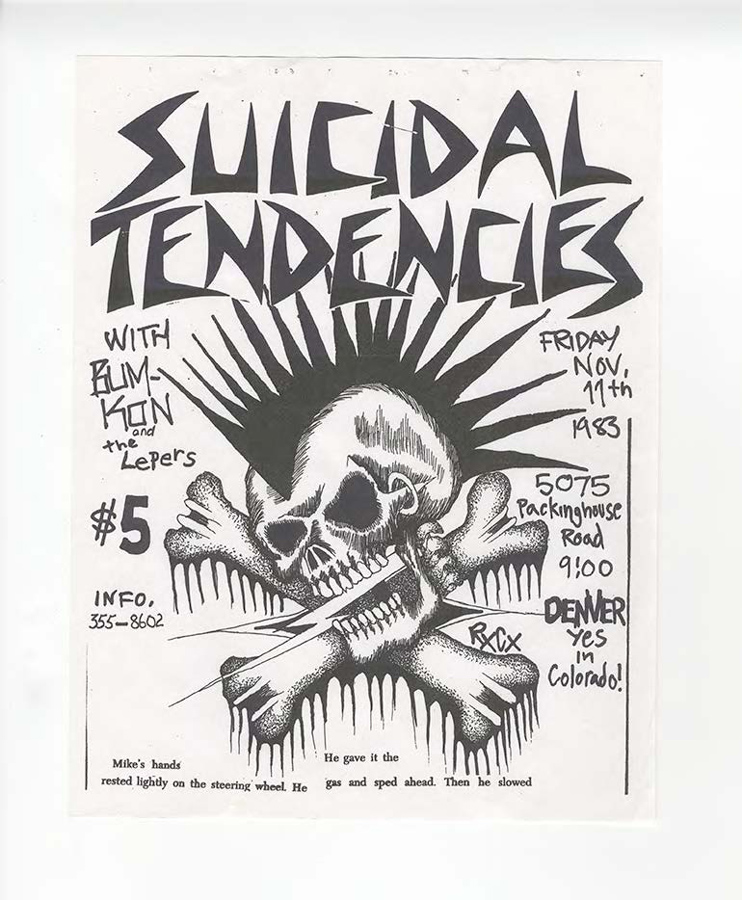
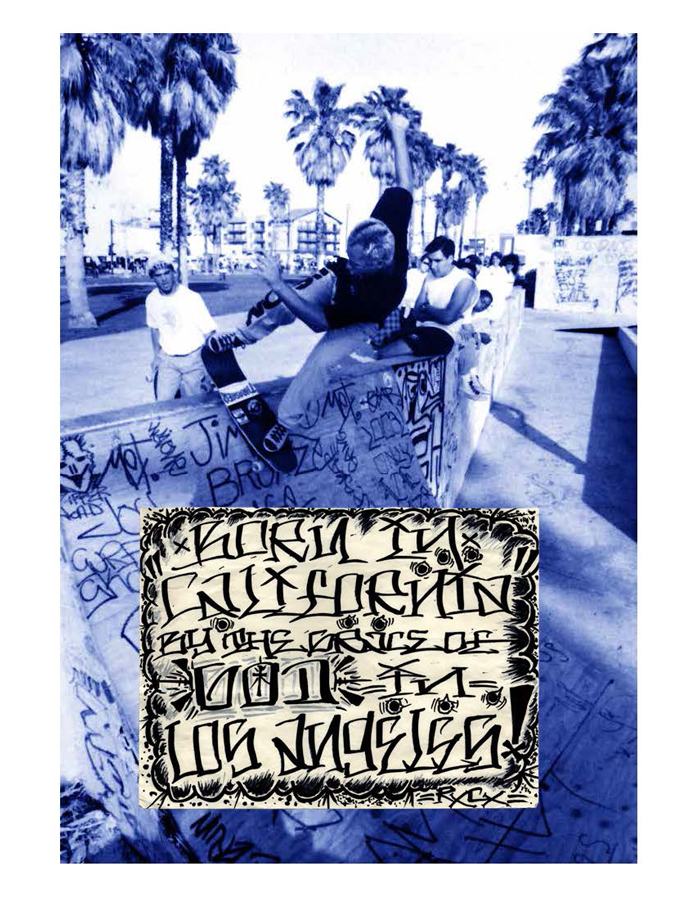
Clayton grew up in the early skate and surf scene of Venice in the late ‘70s mythicized in the 2001 documentary, Dogtown and Z-Boys. Trailing behind the likes of Tony Alva, Jim Muir, and the late Jay Adams—whom he was closest to in age by being four years younger—Ric was a firsthand witness as this tough group of kids flipped skateboarding from its puka shell quaintness into the denim-driven aggression which fueled the sport throughout the ‘80s. He was also on hand for their transformation into punk rock.
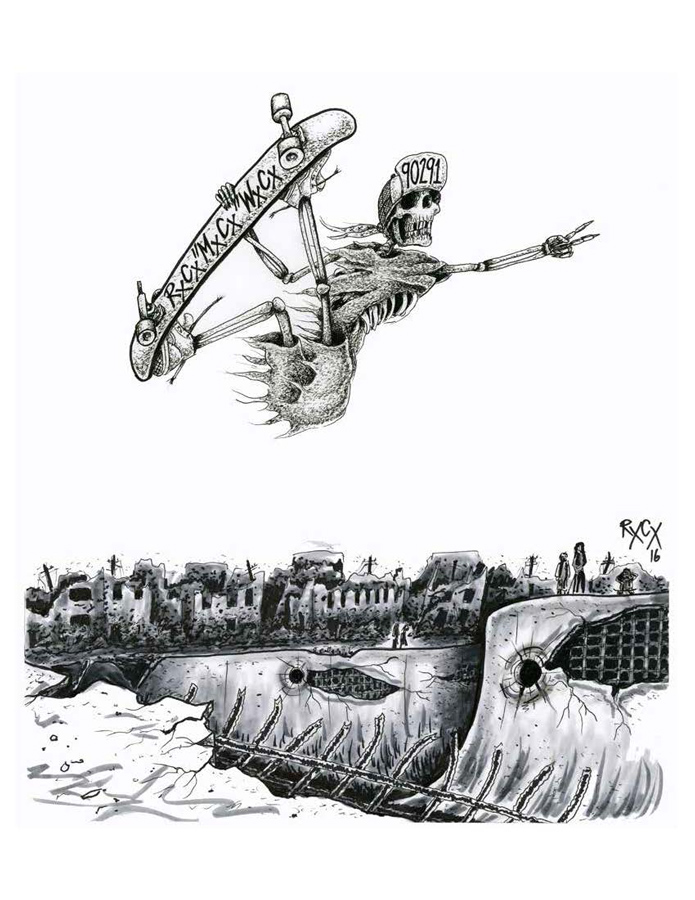
At first, Ric was skeptical of punk; as he had an objection to chopping off the long locks which attracted the girls to him in high school. He was even more suspicious when a skinhead from his class invited him along to a house party where a then-newly founded Suicidal Tendencies were playing a gig. “Back then, no one had a skinhead unless they just got out of prison or were just plain crazy. I really thought I was going to get jumped or some shit when he invited me to that show,” remembers Clayton. Although he was warned not to go inside because of his hair length, he dug the dangerous vibe and for a short time was spiking up his long hair in the style of British punk bands like Discharge and GBH before reverting back to his Pendletons and jeans. “I was into skating before punk rock and it all just seemed like the same shit to me, you know?” says Ric. “It was the same attitude I had before, just with a different haircut.”


Ric through the years. Photos courtesy of Gingko Press.

Ric Clayton today. Photo by Nathanael Turner.
The visually talented Clayton quickly entrenched himself in the local scene doing flyer artwork for Suicidal as well as other Venice bands like Against, Neighborhood Watch, and his own group, No Mercy. With a lack of funds and materials, he began to create shirts for Suicidal using the only resources he could muster: a marker and used clothing. “Back then, I think the only band who had actual printed shirts was Black Flag. For the younger bands, there was no shirts because it cost a lot of money to get them printed up. We’d buy these collared, button-down shirts in the thrift store and I’d draw on them. I drew a Suicidal Tendencies shirt for someone and once Jay Adams saw it, he said, ‘Make me one!’ Once I made him one, everyone wanted one.”
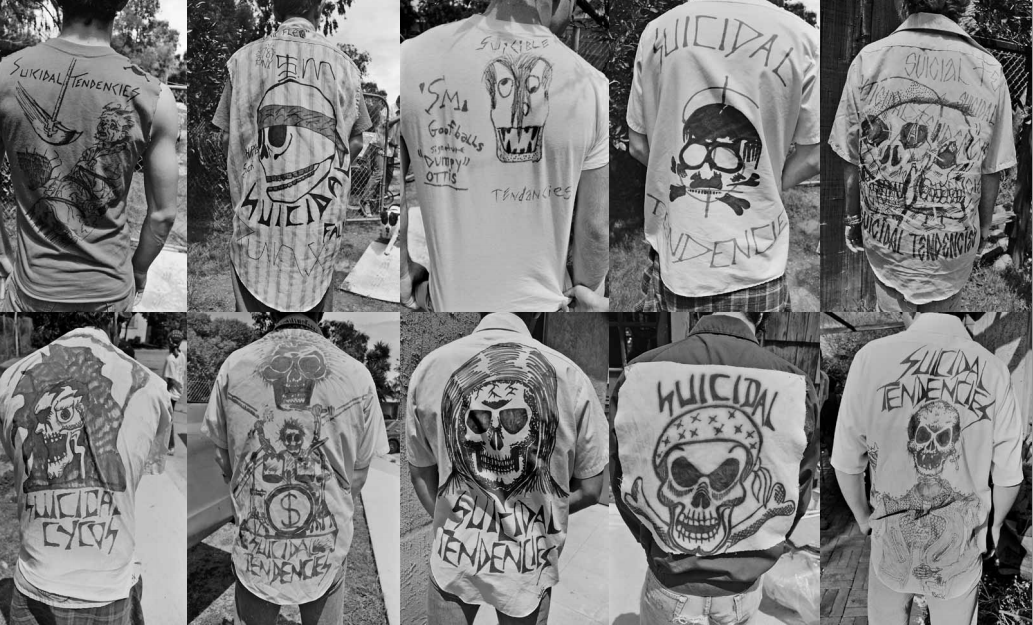
With the lethal combination of Ric’s striking imagery and a take-no-shit attitude, Suicidal and their crew were immediately recognized, and also shunned, by the SoCal punk scene. “Everybody hated us!” recalls Clayton with a tinge of pride in his voice. When I volley back asking why, he pauses for a second and bellows back, “Because we kicked ass!” This time, the self-confidence in his voice is certain. Already overrun with a rash of bloodthirsty gangs like the Los Angeles Death Squad, Circle One, and La Mirada Punks, some felt the scene wasn’t big enough for another nervy crew. “People called us a gang at first, but that was just us and the way we hung out in our neighborhood,” recalls Ric. “If you came to where we lived and tried to fuck with us, we were going to fuck with you right back. So, we just took that attitude outside of where we lived.”
“Everyone was tripping on my artwork, but I was too busy having fun.”
When it came time for Suicidal to cook up the contents of the cover for their debut album with images of Clayton’s shirts gracing it, a scheme was hatched to attract every punk to Venice whether they liked it or not. “Black Flag were the biggest punk band in L.A. next to Circle Jerks or T.S.O.L. and we got them to play my buddy’s grandma’s pad during the day. If you were going to see them at all, it was in some huge hall, so it was a trip for them to play a house on a Sunday afternoon.” An A.P.B. was sent out throughout the Venice Suicidals: Show up with your Clayton-drawn shirt and get on the cover of the album. “If someone didn’t show up in a shirt, Glen [E. Friedman] said to me, “Hey! Make as many as you can!” There was a shirt that said ‘Suicibal’ on it. I don’t know if anyone ever noticed.”

Photo: Nathanael Turner.
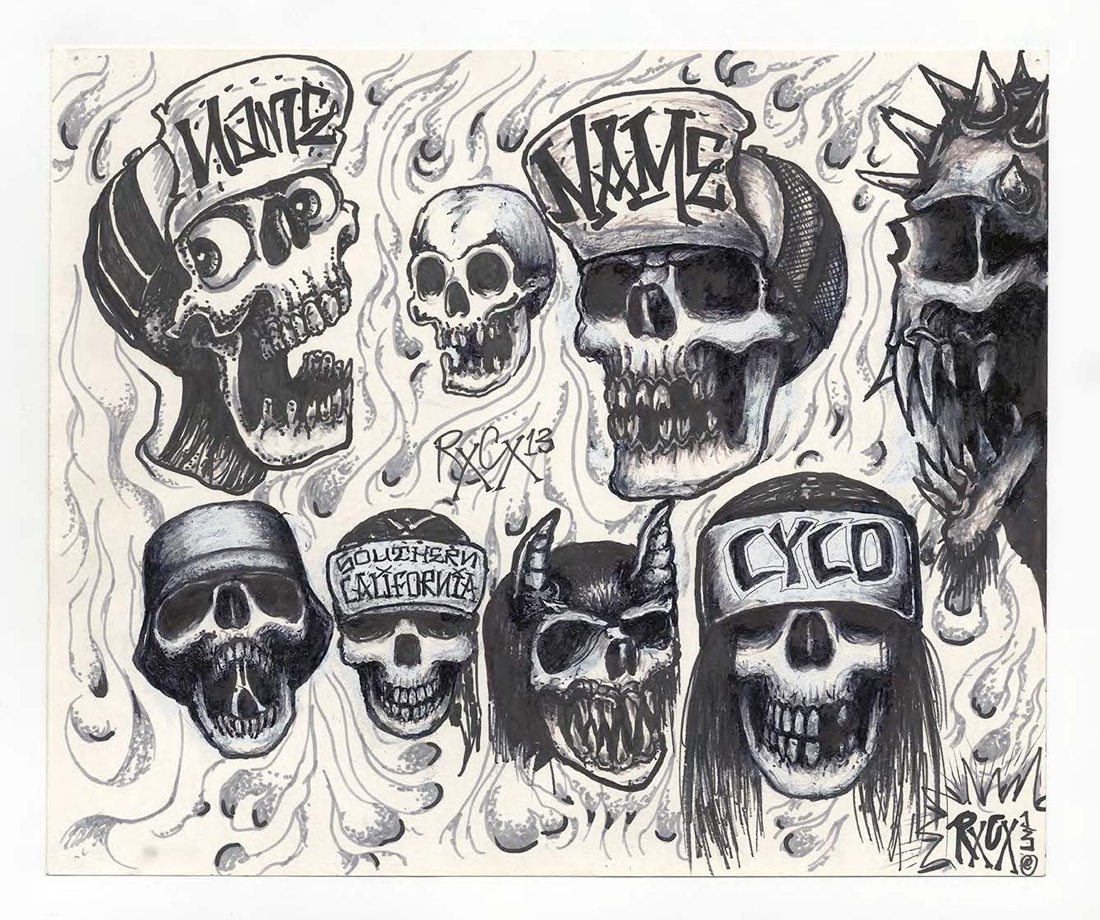
The image those shirts projected off that album and into the world outside of the Southern California punk scene was compelling. The collage of photos made it seem like the band had a hand-cranked army of devotees willing to throw down for them—which wasn’t too far from the truth. And although the sharing of that look among Latino gangs and the surfers and skaters who followed Suicidal was common knowledge on the West Coast, it showed itself to be exotic once it left its location of origin. When Suicidal Tendencies came to play the East Coast in the Fall of 1984 decked out in the gangster attire of their area, it had a major effect on the scene. By next week’s show, a good amount of punks had shed their leathers for flannel shirts buttoned only at the top, bandanas worn low down on the forehead and khakis stolen from their dad’s closet.
“That look ended up all over the fucking world,” says Clayton with amazement. “We grew up with that look. My uncles were in gangs and that’s just the way they dressed. It’s cool, I just don’t know where these people in Japan get the clothes from.”
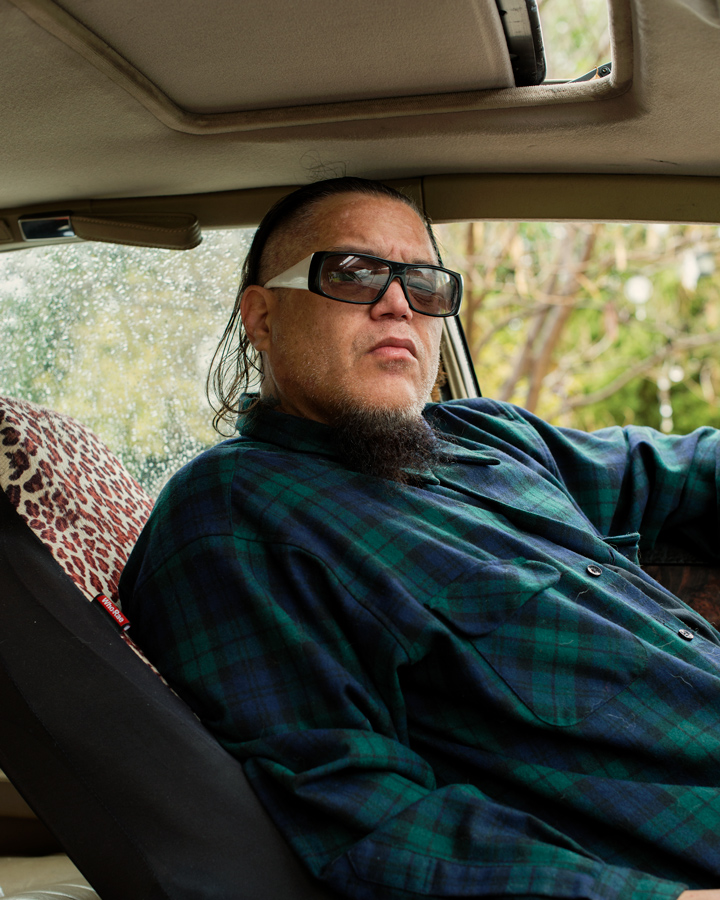
Photo: Nathanael Turner.
As the ‘80s continued, Ric’s imagery became unavoidable as Suicidal became arguably the biggest punk band in the country and an unconscious branding of Venice street culture began. Firstly, there were the bands’ T-shirts—now actually silk screened—emblazoned with Clayton artwork worn by skate rats worldwide turned off by the dayglo fashions being pushed in the glossy skate magazines. There was also Suicidal Tendencies’ vocalist Mike Muir’s label Suicidal Records, which propelled the atypical metal-tinged sound of other west side bands such as Beowulf, Excel, and Clayton’s band No Mercy into the world. And finally, there was the launch of Mike’s brother and Dogtown OG Jim’s Dogtown skateboard company with pretty much every deck adorned with Clayton’s imagery.
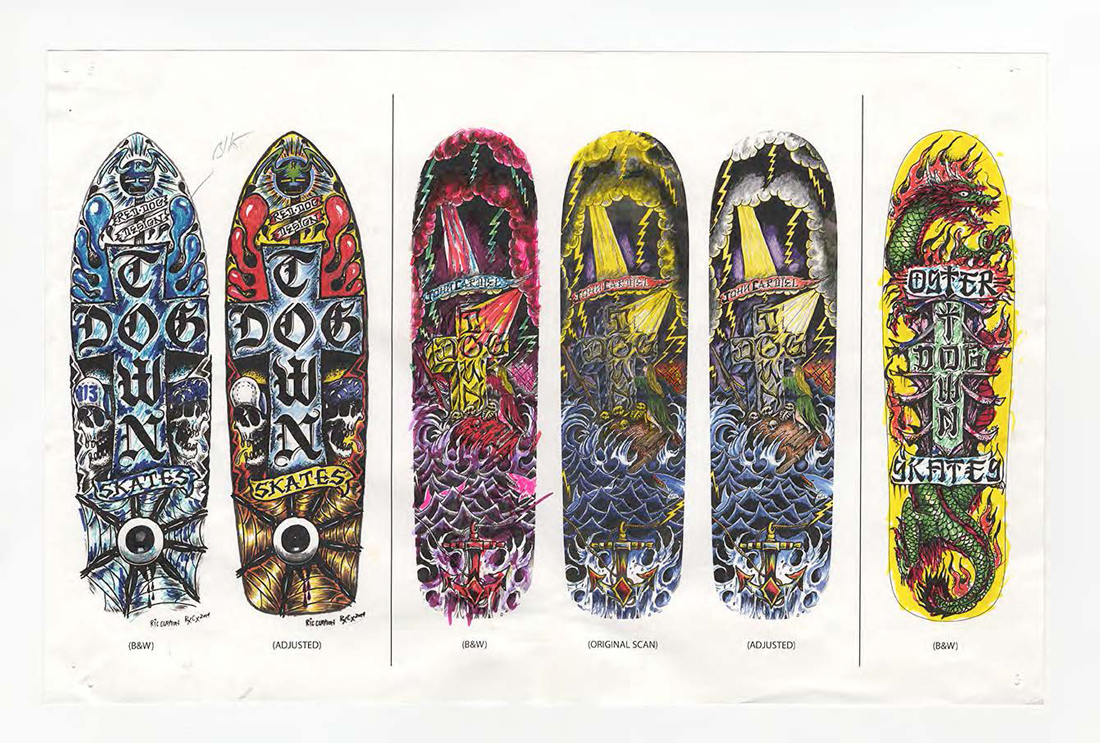
Later on in the ‘80s, the vines of Venice became even more intertwined as Ric played bass briefly in Suicidal Tendencies while Mike Muir took over vocal duties for No Mercy, who released the criminally underrated Widespread Bloodshed/Love Runs Red album in 1987. When asked about the most productive period in his career, Ric doesn’t have much to say other than, “It felt like a dream come true.”
For the bulk of the next two decades, Ric stepped away from the drawing table and began tattooing. “I really liked drawing,” he says, “But you couldn’t make a lot of money doing it. You could make money from tattooing, though.” Every once in awhile, a buddy or client would get in Clayton’s ear about how his artwork from the ‘80s was still recognized as important in punk circles. “Friends told me how some of my stuff was in Bryan Ray Turcotte’s Fucked Up and Photocopied book, but I didn’t care. Everyone was tripping on my artwork, but I was too busy having fun.” When Ric went along to see a reunion show by old neighborhood buddies Excel in March of 2013, he met the aforementioned Turcotte who confirmed Clayton’s legendary status in punk art. “Bryan Ray and the guys in Excel were telling me I was famous and I was like, ‘I’m not famous.’ But they kept telling me my stuff was known worldwide. I didn’t know. I was so detached from the whole punk thing for so long.”
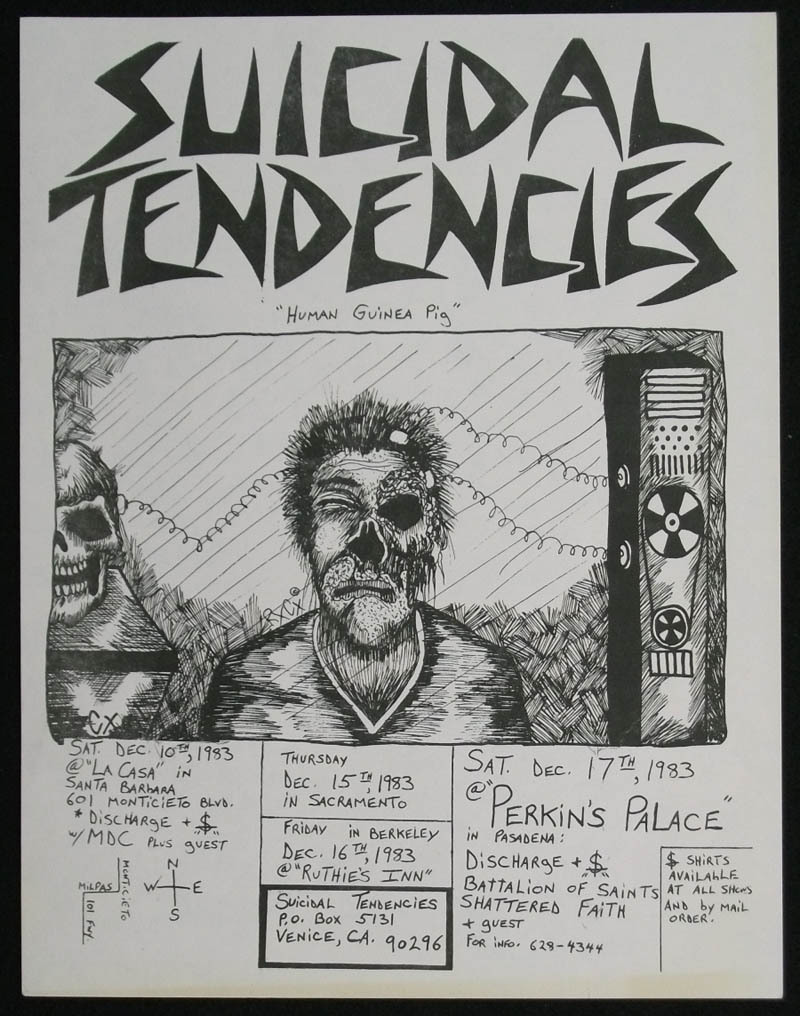
Photo: oldpunkflyers.tumblr.com
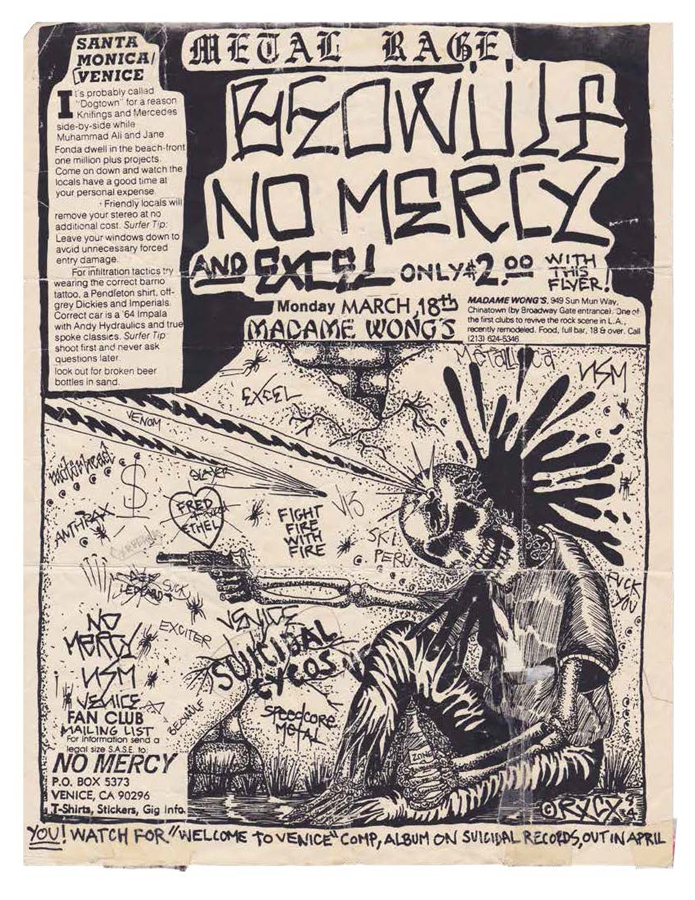
Some time after their meeting, Turcotte let Ric know he was interested in compiling a book of his artwork. “He invited me over to his studio and he had every motherfucking flyer I ever done. His studio is like a punk rock museum. He showed me his books and I knew he was the guy to work with.” The results of the duo’s exhaustive results will be available in May under the title Welcome To Venice; a split release between Gingko Press and Kill Your Idols Press. The almost 200-page tome gathers Clayton’s artwork from both his past as well as the present proving that his frightening talent has not diminished over the years.
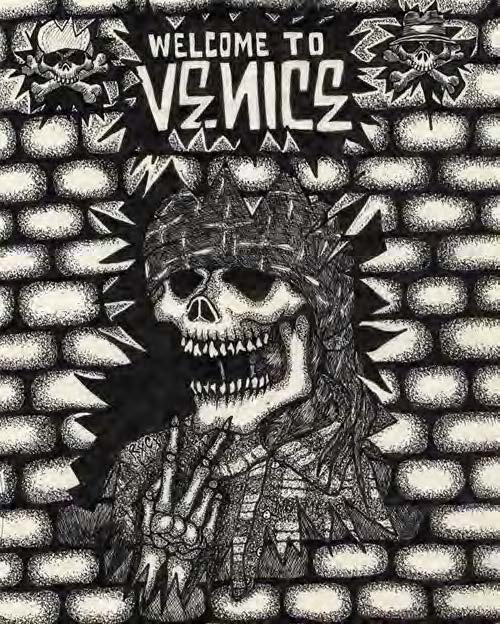
But it’s more than just a mere collection of his drawings as it takes in his entire history, complete with photos showing his transformation from long-haired skater to spikey-haired punk, to his incarnation as an overall badass. “I’d say it’s pretty much my life story,” he says following it up with a weary sigh and continuing, “It just seems like it’s all caught up. For a long time, I’d see kids skating and ask them if they knew who Jay Adams was. They’d say, ‘Who?’ and I’d be like, ‘Who? He’s just the baddest motherfucker to skate ever!’ But now, people care about the history.”

Photo: Nathanael Turner
As our conversation burns on, Ric continues to marvel at the staying power of all he was involved in during his youth. “I had no idea it would last this long. It’s all getting born again. Jim is remaking the Dogtown decks from the ‘80s and this book is coming out. Growing up in Dogtown and doing artwork for Suicidal, I guess I was just in the right place in the right time. And I guess it was just the right time to be wrong.”
***
Follow Ric on Instagram at @rxcx_ric_clayton.
All artwork courtesy of Gingko Press via their forthcoming Welcome to Venice book, featuring the work of Ric Clayton. The book releases May 11 and can be pre-ordered via Gingko or Amazon.
Photography by Nathanael Turner.

